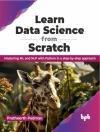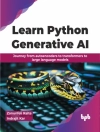Domain engineering is a set of activities intended to develop, maintain, and manage the creation and evolution of an area of knowledge suitable for processing by a range of software systems. It is of considerable practical significance, as it provides methods and techniques that help reduce time-to-market, development costs, and project risks on one hand, and helps improve system quality and performance on a consistent basis on the other.
In this book, the editors present a collection of invited chapters from various fields related to domain engineering. The individual chapters present state-of-the-art research and are organized in three parts. The first part focuses on results that deal with domain engineering in software product lines. The second part describes how domain-specific languages are used to support the construction and deployment of domains. Finally, the third part presents contributions dealing with domain engineering within the field of conceptual modeling.
All chapters utilize a similar terminology, which will help readers to understand and relate to the chapters content. The book will be especially rewarding for researchers and students of software engineering methodologies in general and of domain engineering and its related fields in particular, as it contains the most comprehensive and up-to-date information on this topic.
Tabela de Conteúdo
Separating Concerns in Feature Models: Retrospective and Support for Multi-Views.- A Survey of Feature Location Techniques.- Modeling real-time design patterns with the UML-RTDP profile.- When Aspect-Orientation meets Software Product Line Engineering.- Utilizing Application Frameworks: a Domain Engineering Approach.- Domain-Specific Modeling Languages – Requirements Analysis and Design Guidelines.- Domain specific languages and standardization: Friends or foes?.- Domain Engineering for Software Tools.- Modeling a Model Transformation Language.- A Reconciliation Framework to Support Cooperative Work with DSM.- Model Oriented Domain Analysis & Engineering.- Multi-Level Meta-modeling to Underpin the Abstract and Concrete Syntax for Domain Specific Modelling Languages.- Ontology-Based Evaluation and Design of Visual Conceptual Modeling Languages.- Automating the Interoperability of Conceptual Models in Specific Development Domains.- Domain & Model Driven Geographic Database Design.
Sobre o autor
Iris Reinhartz-Berger has been a faculty member at the Information Systems department of the University of Haifa since October 2003. Her main research interests are in software engineering methodologies in general, and in domain engineering, software product line engineering, meta-modeling, and method engineering in particular.
Arnon Sturm is a faculty member at the Department of Information Systems Engineering at the Ben-Gurion University of the Negev. His research relates to the development of software systems. In particular, he focuses on domain engineering, conceptual modeling, development processes, and business process management.
Tony Clark is a professor of informatics at the School of Engineering and Information Sciences of Middlesex University in the UK. The focus of his recent work has been on investigating approaches to model aspects of an organization, resulting in a so-called “model-driven organization.”
Sholom Cohen is Senior Member of the Technical Staff at the Software Engineering Institute at Carnegie Mellon University. His key responsibilities are in software product lines, software architecture, system of systems development. Sholom is a key contributor to SEI’s Product Line Framework and the Product Line Business and Acquisitions Guidelines.
Jorn Bettin is a Managing Partner of S23M, an international group of experts in software product line engineering and formal model engineering, which he founded in 2002. Jorn has led the implementation of automated, model-driven product line development in several software organizations worldwide, has co-authored three books on this topic, and has worked in methodology leadership roles in an IBM product development lab.












